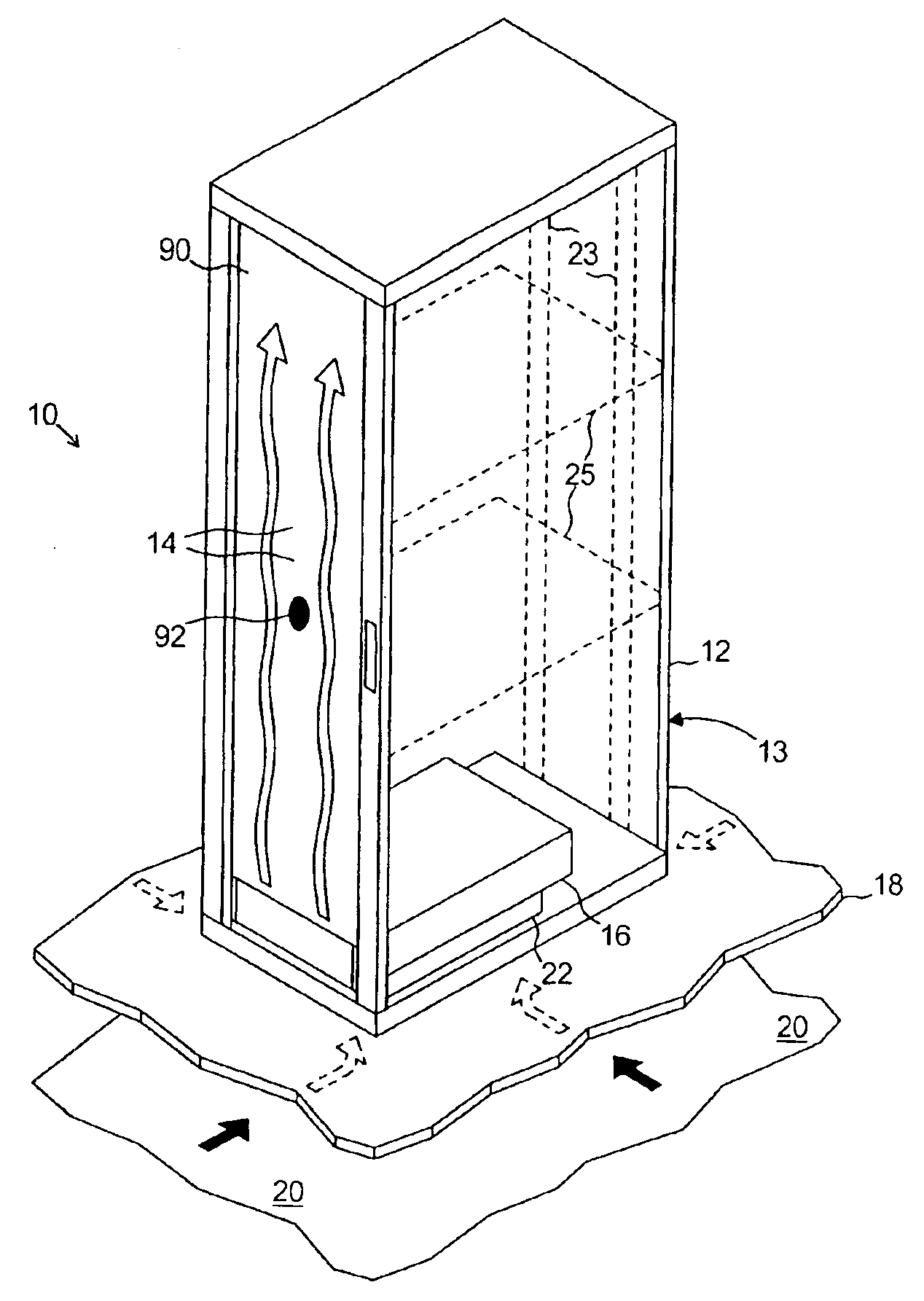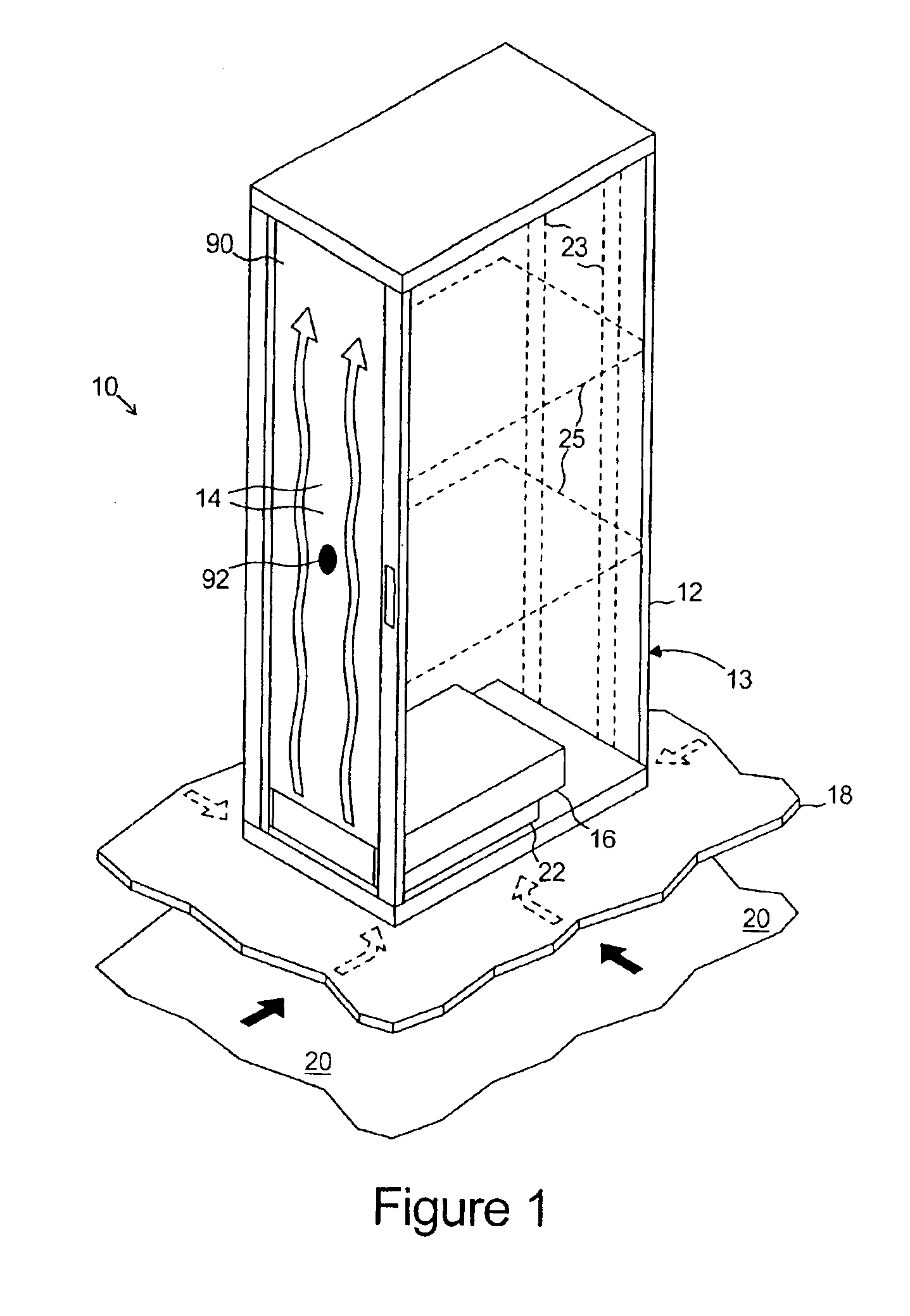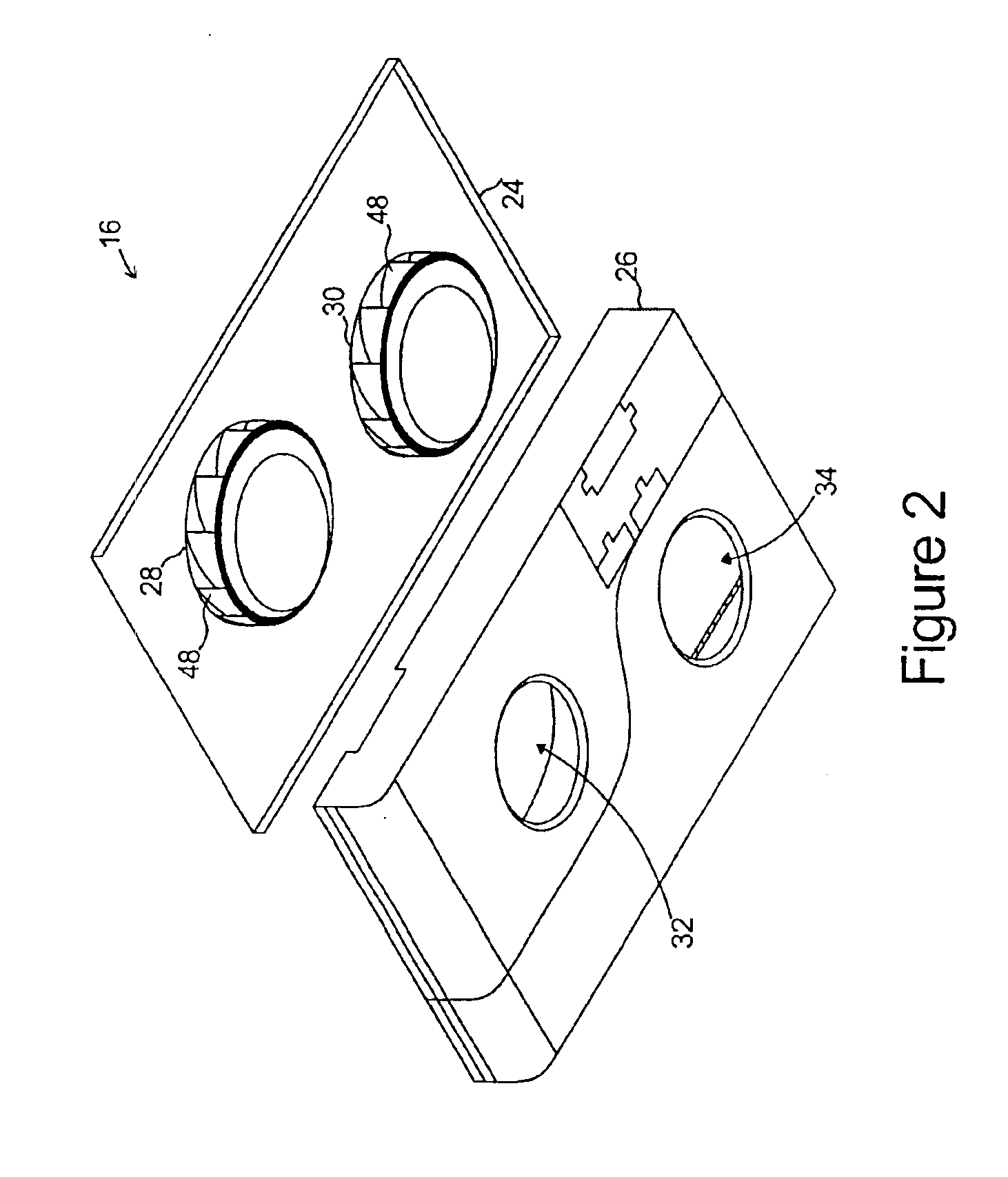Rack-mounted equipment cooling
a rack-mounted equipment and cooling technology, applied in the direction of cooling fluid circulation, domestic cooling apparatus, lighting and heating apparatus, etc., can solve the problems of unsatisfactory heat, performance and reliability, affecting the useful life of components, etc., to improve the cooling efficiency of rack-mounted components, reduce hot spots, and increase the reliability of rack-mounted components
- Summary
- Abstract
- Description
- Claims
- Application Information
AI Technical Summary
Benefits of technology
Problems solved by technology
Method used
Image
Examples
Embodiment Construction
[0018]At least some embodiments of the invention provide techniques for cooling rack-mounted equipment. Embodiments of the invention include a modular, self-contained unit for cooling rack-mounted equipment where the unit has multiple fans for drawing air in through at least one input port and forcing the air out at least one exhaust port. The exhaust port is disposed at one end of the unit and directs the forced air upward such that cool air can be forced upward along an end of an enclosed rack of equipment. An exemplary unit has two fans, two input ports, and two exhaust ports. The input ports are designed to mate with the fans to permit the fans to draw air, e.g., from around the rack, from the space beneath the rack, or through an opening in a floor on which the rack rests. Using this unit in a room with an elevated floor under which cool air is provided, the unit can draw cool air in the input ports and force the cool air out of the exhaust ports upward toward the rack-mounted ...
PUM
 Login to View More
Login to View More Abstract
Description
Claims
Application Information
 Login to View More
Login to View More - R&D
- Intellectual Property
- Life Sciences
- Materials
- Tech Scout
- Unparalleled Data Quality
- Higher Quality Content
- 60% Fewer Hallucinations
Browse by: Latest US Patents, China's latest patents, Technical Efficacy Thesaurus, Application Domain, Technology Topic, Popular Technical Reports.
© 2025 PatSnap. All rights reserved.Legal|Privacy policy|Modern Slavery Act Transparency Statement|Sitemap|About US| Contact US: help@patsnap.com



